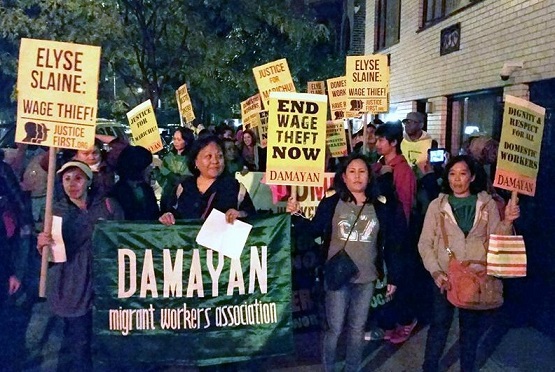More than 10 million gig workers earn less than $7 per hour: analyst

By Sunita Sohrabji
More than 10 million workers in the U.S. are in the gig economy, driving for ride-share apps or meal delivery services.
Such workers, according to Dr. Michael Reich, professor of Economics and chair of the Center on Wage and Employment Dynamics at the Institute for Research on Labor and Employment at the University of California, Berkeley, are largely immigrants and are misclassified as independent contractors. By his calculations, they earn less than $7 per hour, despite putting in more than 12-14 hours a day.
“Why is the pay so low? How did the companies get away with this? Well, one reason is that many of the drivers, especially the immigrants, do lack the skills or connections to get better jobs, and so they’re kind of a captive labor force,” said Reich who spoke at an Ethnic Media Services news briefing June 21.
Minimum Wage
“Companies also now use algorithms to determine which drivers will accept lowball pay offers for a ride. That pits the drivers against each other, and it leads to a race to the bottom for wages. It means that the companies have individualized pay and are giving more of their ride offers to those who are most desperate. That is not what constitutes equal pay for equal work,” he said, advocating for drivers to be classified as employees, with standardized pay and benefits.
Reich has testified before Congress to raise the federal minimum wage — currently $7.25 per hour — to a more sustainable $15 per hour. 27 million workers would benefit from the increase.
He noted that independent contractors do not currently have the right to unionize, but several states, including Massachusetts, are considering laws that would support collective bargaining for gig workers.
Discrimination
Gender and race-based wage inequalities must be addressed by policy makers, said Dr. Michelle Holder, associate professor of Economics at John Jay College of Criminal Justice in the City University of New York. According to the Bureau of Labor Statistics, using 2023 annual data, white workers earning full time earned a median of $59,000 a year, while Black workers earned a median of $48,000 a year, which works out to Black workers earning 81 cents to the dollar a White man makes. Black women overall earn just 73 cents to the dollar a White man makes, whereas Latina women earn the least: just 57 cents to the dollar a White man earns.
While some of the wage gap can be attributed to women possessing less human capital — fewer years in the workforce, lower levels of education, lack of access to networks in which high-paying jobs are offered — Holder also believes discrimination plays a huge role.
Effective policies to combat race and gender-based wage gaps have been enacted at the state level, he said. Pay transparency laws, which require businesses to post a range of compensation for every job listing, have been effective in limiting discrimination against women and people of color. New York state has a law which makes it illegal for prospective employers to request previous salary histories from job applicants.
“Salary histories have been shown to have disparate outcomes for women and people of color in the American workforce,” she said.
Intergenerational Mobility
Intergenerational mobility — the theory that a child will outperform their parents wage-wise by the time they are 35 — is a key driver of the American Dream but has been on the decline for the past several decades, noted Dr. Austin Clemens, senior fellow at the Washington Center for Equitable Growth. In the 1940s and 50s, 90% of young adults out-earned their parents. But by the 1980s and beyond, that percentage fell to just 50%.
“Most of the growth in income is happening in already high-wage professions. And we see much weaker growth for people working in blue collar jobs,” said Clemens.
Immigrants, surprisingly, are actually more upwardly mobile than native -born citizens of the U.S., he said, noting that has held true over the past two centuries of migration.
“First-generation parents, because of discrimination, because they’re in a new country, might struggle to earn an income that’s commensurate with their abilities and their talents,” said Clemens. “But their children tend to fare quite well because immigrants tend to pick places where there are good jobs, and good prospects for education. And so that has a very positive effect on second generation immigrants.”
Strong Labor Force
“Any legislation that makes it easier to unionize, that makes it easier to hold employers accountable, are extremely important for giving us a more equitable distribution of wage growth,” he said, noting also that the U.S. currently has an excellent labor market which should be sacrificed to the specter of inflation.
“This would be a great time for the Federal Reserve to consider cutting interest rates to shore up the job market a little and to keep it running hot. That’s going to be a huge benefit to people at the low end of the wage distribution,” said Clemens. — Ethnic Media Services















